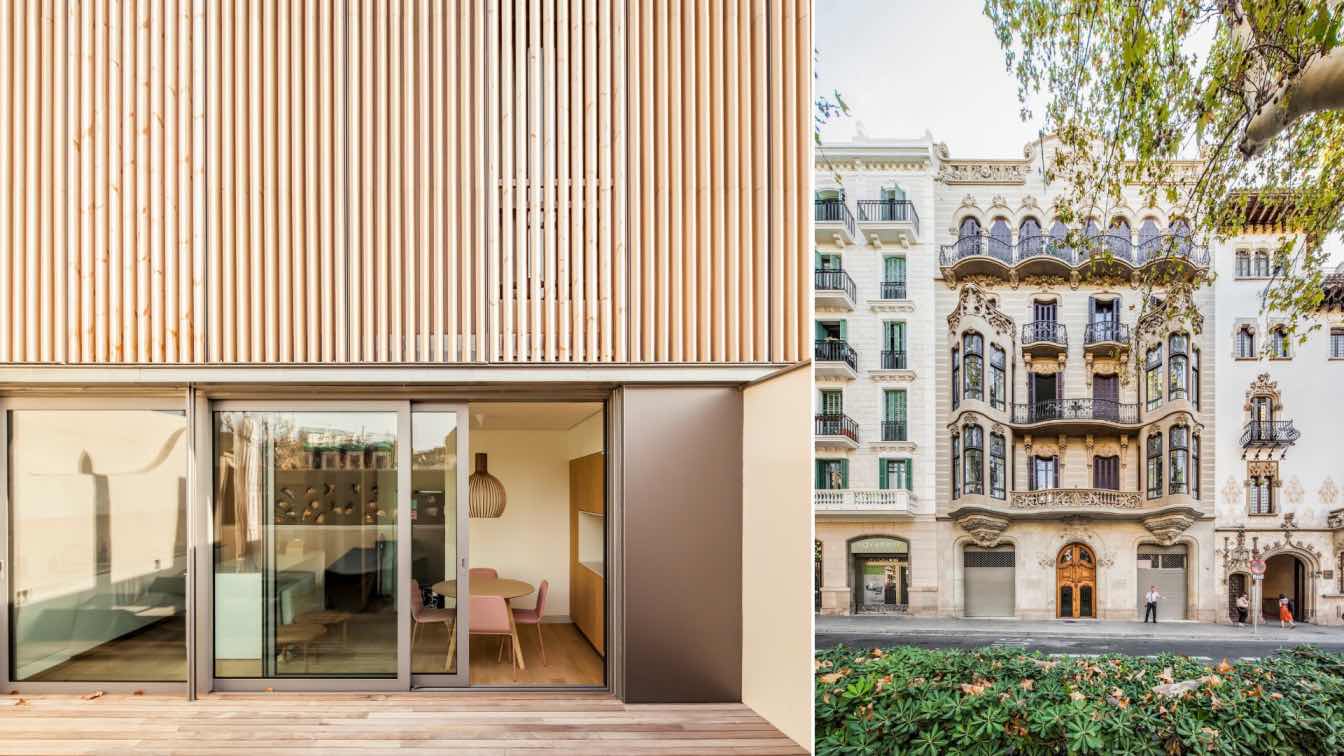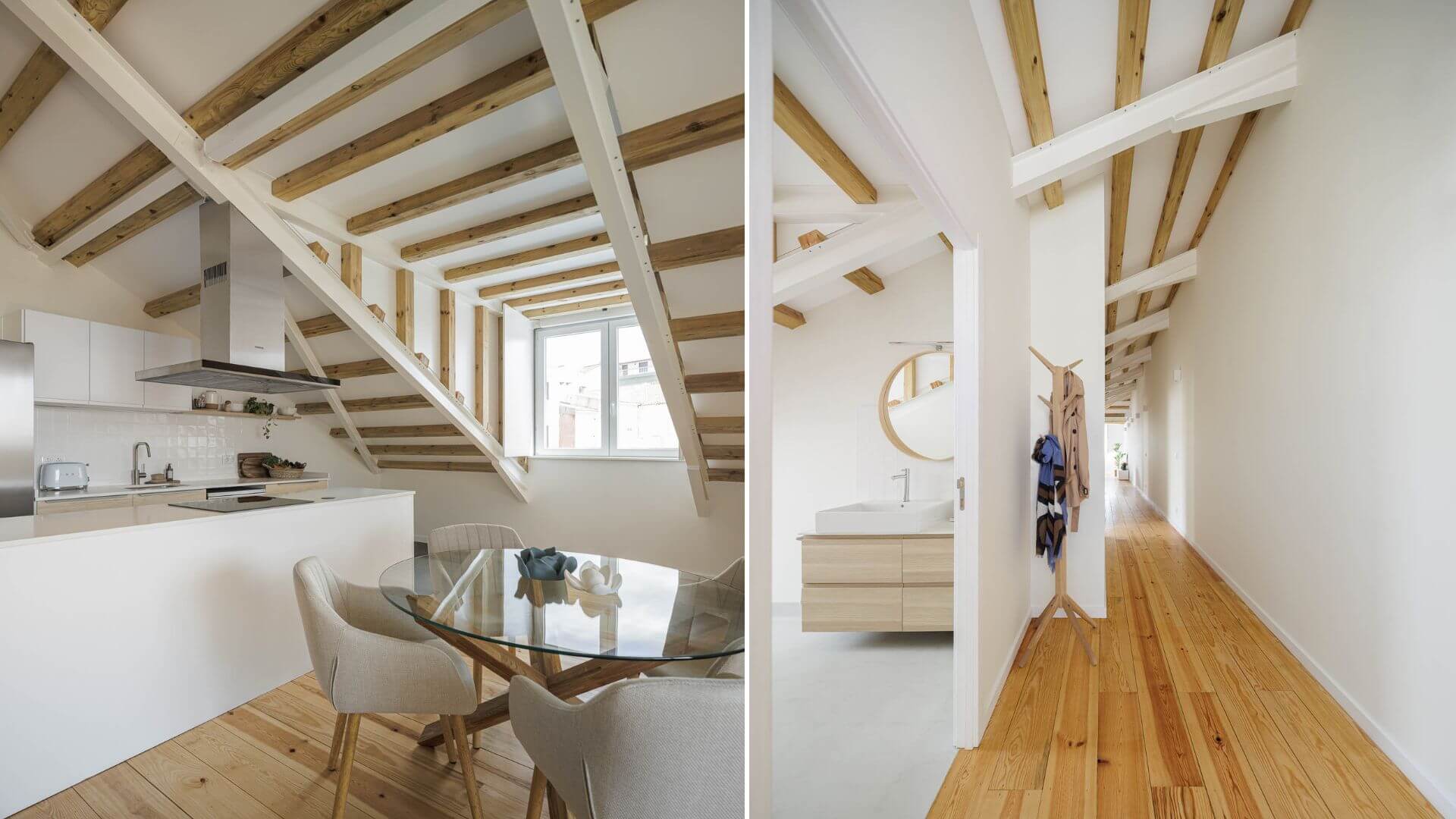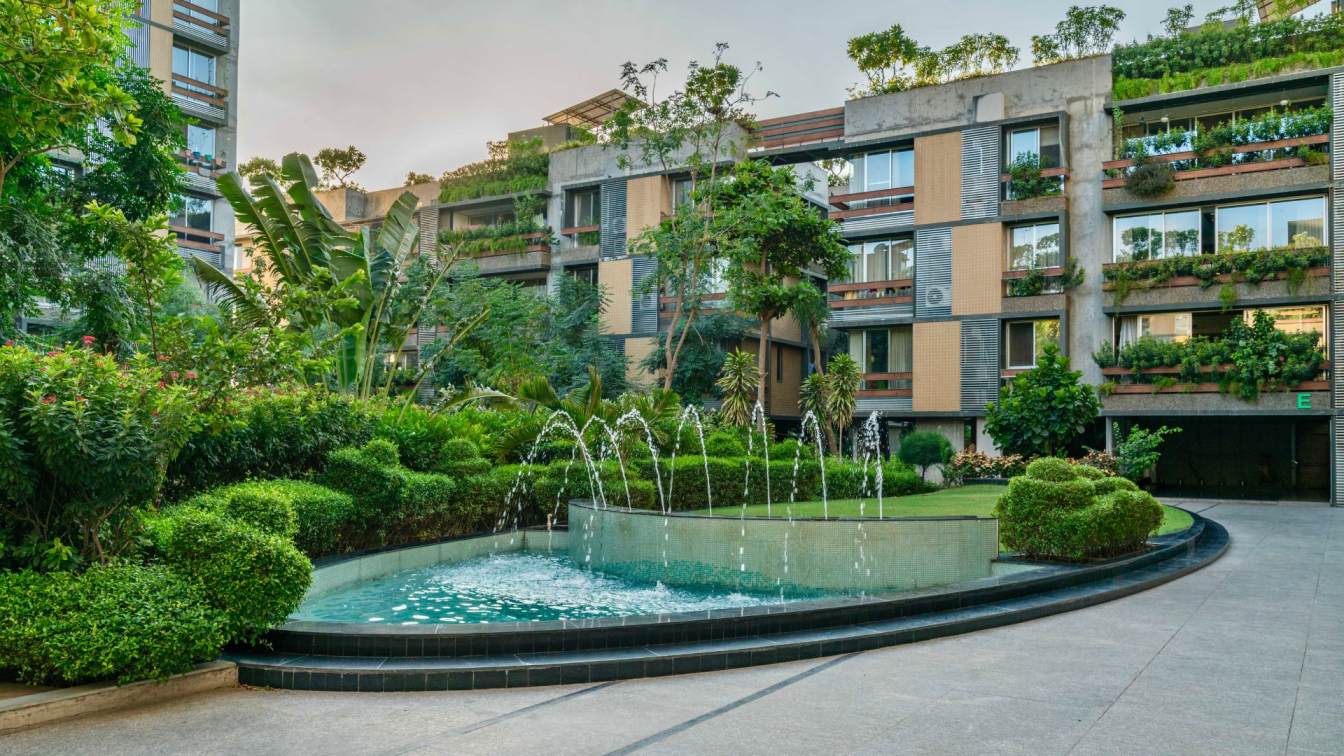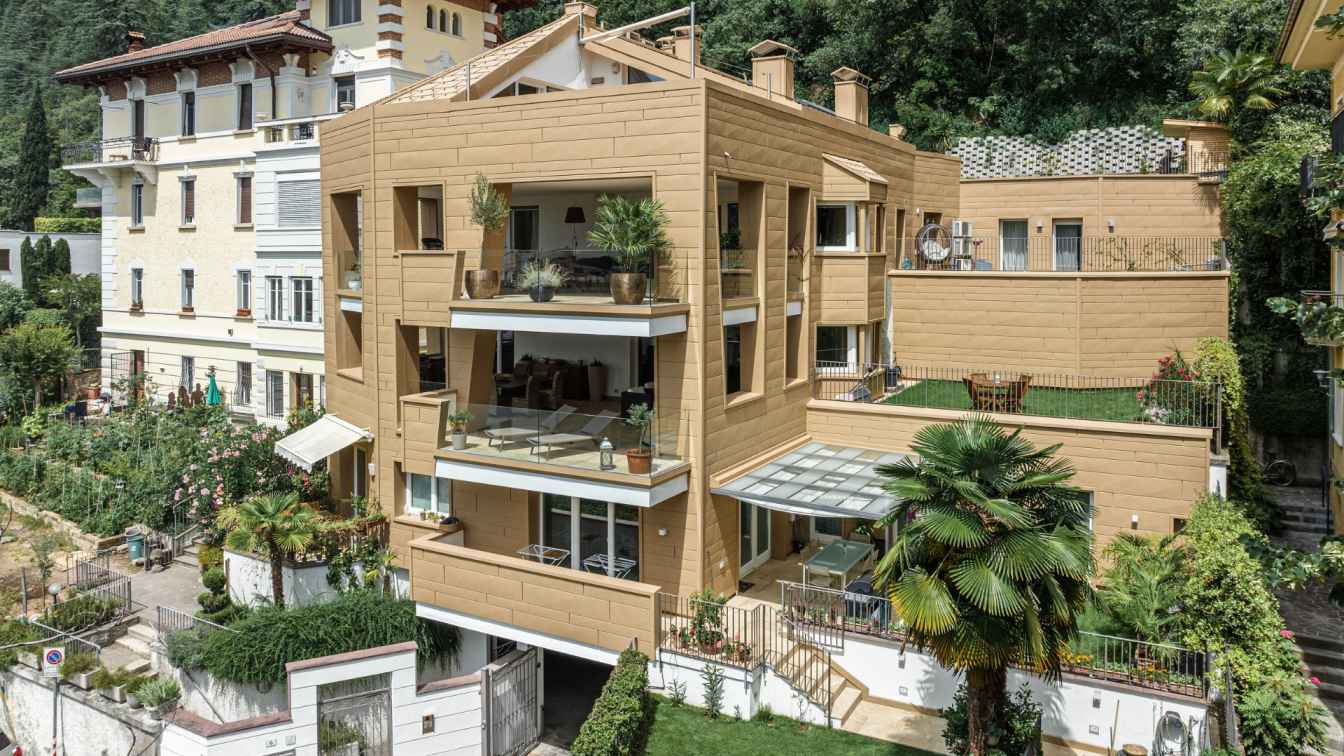edit!: Iconik, a nine-storey apartment building designed by the architectural studio edit!, is located in the Karlín district in Prague at one of the last empty sites resulting from the millennium flood. The plot is situated on the main avenue of a district, which ranks among the most desirable Prague locations, and which has undergone a major architectural and social transformation in the last two decades – once an industrial district transformed into a hip centre full of start-ups offices, restaurants and nightlife with its former Secession buildings and factories being now home to top-level gastro and independent galleries. The proposed building reflects the rich history of the formerly industrial area in its expression, and its material concept is based on both the historical plotting of the built-up area and the irregular height arrangement of the crown cornices typical for Karlín.
Neighbourhood context
The aim was to design a residential building that makes efficient use of the available space in accordance with local regulations and the surrounding context. The brief called for the building to be designed to offer small apartments for long or short-term rentals, while also paying natural respect to the history of the neighbourhood, the transformation of which the initiators of the project, the Karlín Group and its founder Serge Borenstein, were co-creating since more than twenty years ago – it was them who in 2002 after the flood invited the Catalan architect Riccardo Bofill and young Czech architects and developed a proposal for the transformation of the entire Karlín area.
Iconik is visually divided into two masses based on the original division of the site and the structure of the city block with alternating roof heights and cornices - in this case, a narrower mass of nine-storey and a lower and wider eight-storey mass. The size, height and appearance of the building are influenced, among other things, by the strict requirements for conservation of the urban quality of the Karlín district. The design respects these limits in both volume and material design.
![]()
Facade
The building has two main facades. The first is oriented to the street and the second to the courtyard. The street façade establishes the identity of the building itself, where the ceramic cladding with two-tone decoration refers to the traditional materiality of the façades of the 1930s apartment buildings, but also to the local industrial buildings, which have now almost disappeared from the site due to massive development.
The volumes are further characterised by a grid of windows and loggias. The system of facade openings allows for proper light to reach each apartment - all windows are designed with a low sill at 450 mm above the floor, divided into fixed and openable parts, and each opening on the upper floors is provided with an external railing, the same principle is also applied to the windows in the adjacent sloped roof. If necessary, especially on the south façade, the windows can be supplemented with fabric shading.
The protruding system of aluminium lamellas in the left part of the façade suggests the contours of the historic building that once stood on the site, thus recalling the original scale and spirit of the place. The ceramic cladding transitions seamlessly from the vertical façade to the roof level, while maintaining the building's contemporary expression.
![]()
Planning solution
The internal layout is a classic three-tract with one vertical core, i.e. a standard solution of today's Prague apartment buildings. The three basement floors accommodate parking, technical facilities of the entire building and cellars. On the ground floor there are two commercial units prepared for the operation of a restaurant or bistro with the possibility of utilizing the inner courtyard and the entrance lobby with access to all 48 apartments with a configuration of 1 bedroom + kitchenette to 4 bedrooms + kitchenette, located on levels two to nine - the last two floors are designed as a two-storey penthouse with a roof terrace and swimming pool.
Private terraces
Most apartments with 2 bedrooms and larger have a private loggia or terrace accessible from both the living room and the bedroom. These outdoor spaces, facing south onto Sokolovská Street, are mostly located in front of the bedrooms, creating a forecourt that screens off the most private part of the home, offering users a higher level of privacy inside the apartment in addition to outdoor seating. Premium units of larger layouts with full-glazed living rooms are located on the upper floors of the home. Their spacious terraces provide a view of the green Vítkov hill and the rooftop landscape of Karlín.
Additional information
Supporting structure
The load-bearing system of the building consists of reinforced concrete, with vertical elements alternating between walls and columns. The walls are designed with a thickness of 220 mm. The building is divided into four axis, three of which have a span of 8.1 m and the fourth 3.8 m. The narrower array contains the main vertical circulation, staircase and lift. The ceiling slabs have a thickness of 250 mm in the basement and 220 mm in the above-ground part.
![]()
Heating
The building can be heated using two methods – gas or a central heat source. Both options have the same requirements for the size of the technical rooms in the basement. All rooms in the residential units and commercial areas will be heated by standard radiators and additional underfloor heating located in the bathrooms. A central heat route from Pražská teplárenská, which can be used to heat the proposed building instead of a gas connection, runs along Pobřežní Street.
Water/Sewerage
The water supply line runs directly in front of the property within the sidewalk, the sewer line runs next to the water line. Rainwater will be stored in retention basins in the basement and on the roof of the building.
Zoning regulations
The current land use plan defines the area as stable with general mixed-use development, allowing for both residential and office buildings. Within the zoning area, 60% of the floor area is required to be devoted to housing. No other regulations are defined. Iconik is designed according to the current Prague Building Regulations (PBR) and respects both these regulations and the Master Plan. The main constraints based on the PBR are: the specification of the required amount of parking spaces based on the GFA of the main building functions, the definition of the maximum building height and the need to respect the street lines.
![]()
![]()
![]()
![]()
![]()
![]()
![]()
![]()
![]()
![]()
![]()
![]()
![]()
![]()
![]()
![]()
![]()
![]()
![]()
![]()
![]()
![]()
![]()
![]()
![]()
![]()
![]()
![]()
![]()
![]()
![]()
![]()
![]()
![]()
![]()
![]()
![]()
About studio / author
Edit! was established in 2010 in Prague. The studio is dedicated to projects of various scales, from architecture and urbanism to interiors and temporary installations, and offers a complex range of design activities related to the implementation - including permits, author's supervision and construction management. As a general planner, the firm works with a permanent pool of specialist designers, offering expert evaluation of the construction and investment plans and the preparation of tender procedures. According to the owners, edit! above all is the process of finding a balance between specifications, regulations and budget with an emphasis on quality. The team is experienced in lecturing and running workshops.
Partners:
Ivan Boroš
Juraj Calaj
Vítězslav Danda
Juraj Calaj and Vítězslav Danda are authorized architects of the Czech Architectural Association




